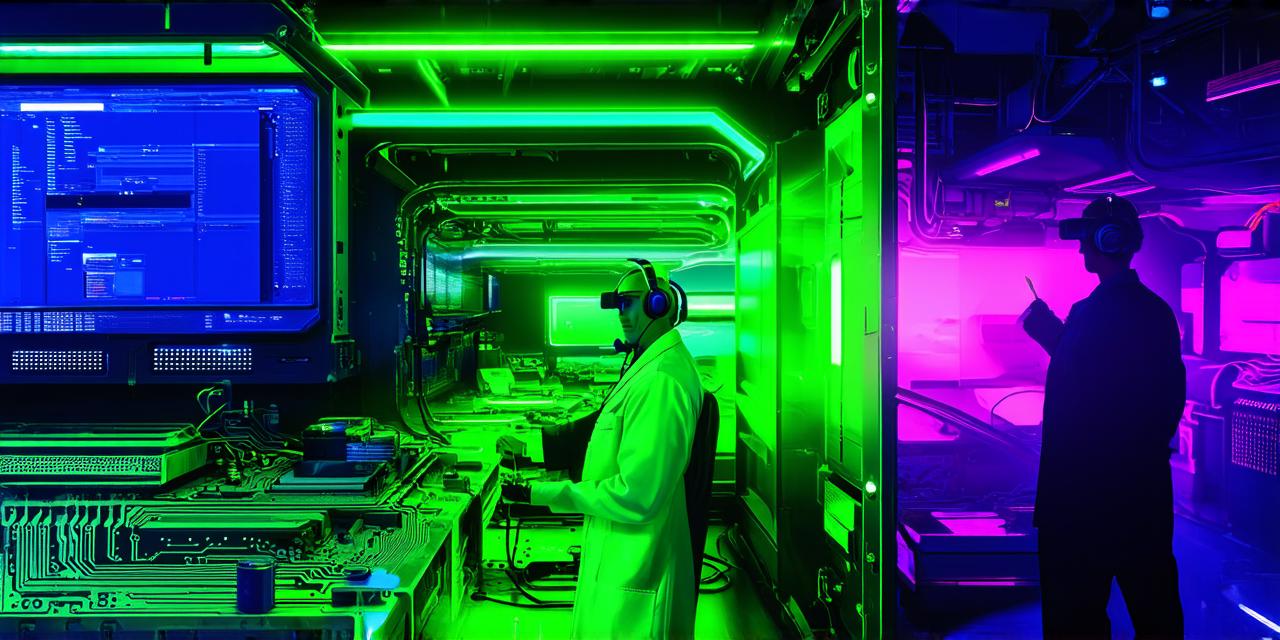
The Early Days of Virtual Reality
The concept of virtual reality dates back to the early 20th century when scientists began experimenting with creating immersive environments for people to experience. One of the earliest examples of VR technology was created by Ivan Sutherland, an American computer scientist who developed the first VR headset in 1968. The device, called the “Sword of Damocles,” allowed users to experience a virtual environment and move around within it.
Another pioneer in the field of VR was William Higinbotham, an American physicist who developed the first VR headset in 1962. The device, called the “HoloTunnel,” allowed users to explore a virtual world using stereoscopic displays and a camera that tracked their movements.
In the 1980s, researchers at MIT developed a VR system called the “Cyberspace” that used a head-mounted display and sensors to track users’ movements in real-time. The system was later commercialized as the “Virtual Reality System” by CyberLink in 1992.
The Rise of Modern Virtual Reality
In the early 2000s, advancements in computer hardware and software made VR technology more accessible and affordable to the general public. In 2004, Oculus VR launched the first commercial VR headset, the Oculus DK1, which was designed for professional use. The device was followed by the release of the Oculus Rift in 2016, which became a game-changer in the world of VR.
Another company that played a significant role in the development of modern VR technology is HTC. In 2015, HTC released the HTC Vive, a high-end VR headset that was designed to provide a more immersive experience than its competitors.
The Role of Software in Virtual Reality
While hardware is an essential component of VR technology, software also plays a crucial role in creating immersive environments and experiences. One of the key figures in the development of VR software was Jaron Lanier, an American computer scientist who created the first VR world in 1983 called “The Aspen Movie Map.”
Later, in 1995, the release of the popular video game “Doom” marked a significant milestone in the development of VR software. The game was designed to be played with a VR headset and used stereoscopic displays to create a more immersive experience for players.
In recent years, advancements in machine learning and artificial intelligence have opened up new possibilities for VR software. For example, researchers at the University of Oxford developed an AI-powered VR system that can learn from its users and adapt to their preferences over time.
The Future of Virtual Reality
Virtual reality technology has come a long way since its inception, and it is clear that it will continue to play an increasingly important role in various industries. As hardware becomes more affordable and accessible, we can expect to see even more innovative applications of VR technology emerge.
One area where VR technology is already making a significant impact is in healthcare. For instance, surgeons are using VR simulations to practice complex procedures before performing them on real patients, which has the potential to reduce the risk of errors and improve patient outcomes.
Additionally, VR therapy has been shown to be effective in treating conditions such as PTSD, phobias, and chronic pain.
In education, VR technology is being used to create immersive learning experiences that allow students to explore historical events, scientific phenomena, and cultural artifacts in a safe and controlled environment. VR simulations can also provide a more engaging and memorable way for students to learn complex concepts.
The gaming industry has been at the forefront of VR technology development, with many popular games being designed specifically for VR platforms. However, VR gaming is not limited to consoles and PCs; mobile devices have also started to incorporate VR capabilities, allowing users to experience immersive gaming on-the-go.
In conclusion, virtual reality technology has come a long way since its inception, and it continues to evolve as researchers and developers explore new ways to create immersive environments and experiences. As the technology becomes more accessible and affordable, we can expect to see even more innovative applications of VR emerge across various industries.
